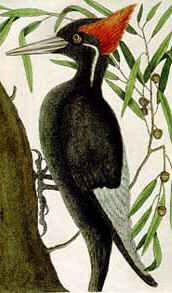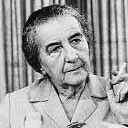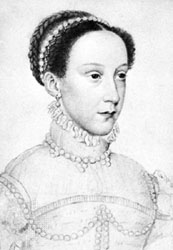 On
a December 08:
On
a December 08: 2002 Presidential election in Serbia. Vojislav Kostunica [photo >] gets most votes, as he did did in the 13 October 2000 runoff election, but, again, the election is declared invalid because less than 50% of eligible voters cast a ballot (44% this time). Again Kostunica would unsuccessfully challenge that, alleging fraud by the partisans of his rival, former ally in the overthrow of Milosevic, Serbian Prime Minister Zoran Djindjic.Kostunica, a moderate nationalist with pro-democratic views who advocates cautious reforms, gets 58% of today's votes, in which his opponents are two extremists: Vojislav Seselj (36% of the votes) of the ultranationalist Serbian Radical Party — an ally of Iraqi President Saddam Hussein; and Borislav Pelevic of the Serbian Unity Party (3.4% of the votes), founded by late Serb warlord Zeljko Raznatovic, better known as Arkan. Kostunica’s current position as President of Yugoslavia, now reduced to Serbia and Montenegro, is soon to disappear as the two republics split, while maintaining a loose union still called Yugoslavia. Slow economic and social reforms, scandals and perpetual power struggles between Kostunica and Djindjic have disillusioned Serbs, who are more concerned with their low living standards and high unemployment. A new president of Serbia was supposed to succeed Milan Milutinovic, whose term ends in January. The law being unclear as to what to do after this second failed election, Milutinovic is likely to be replaced temporarily by Serbian parliament speaker Natasa Micic. Milutinovic was indicted by the UN tribunal in The Hague, Netherlands, along with Milosevic for war crimes in Kosovo and likely faces extradition once his mandate expires. Djindjic will try to get the election law changed so as to get one of his buddies elected President by parliament. Djindjic, however, has hinted he wants to change the election law, and install an ally of his own to the post of president by changing the law to allow presidential elections by parliament. To bring down Djindjic’s government in the Serbian parliament, Kostunica would have to make an alliance with Milosevic’s followers.
2001 Last probable sighting of Osama bin Laden by outsiders, villagers of Tangi, Afghanistan, close to the Pakistan border near the Tora Bora region, shortly before the end of two weeks of intensive bombing of caves by the US (which failed to secure all escape routes, for fear of casualties). They say he was on horseback with 20 other Arabs, on his way to Pakistan.
2000 A divided Florida Supreme Court ordered, four to three, an immediate hand count of about 45'000 disputed ballots and put Democrat Al Gore within 154 votes of George W. Bush in the state's lingering presidential contest.
2000 In the series of US 25 cent coins commemorating each state's entry into the union, it is the turn of New York. Its quarter features the Statue of Liberty and the Erie Canal.
1999 NASA announces that it has all but given hope that the Mars Polar Lander is not lost.
1997 The Union Bank of Switzerland and the Swiss Bank Corp. announce plans to merge, creating the world's second largest bank with assets of some $600 billion.
1997 Jenny Shipley is sworn in as the first woman prime minister of New Zealand.
1996 The Serbian Supreme Court ruled against opposition parties who said Slobodan Milosevic had robbed them of an election victory in Belgrade.
| 1993 The North American Free Trade Agreement (NAFTA) is signed into law by President Bill Clinton. NAFTA, a trade pact between the United States, Canada, and Mexico, eliminates virtually all tariffs and trade restrictions between the three nations. The passage of NAFTA is one of Clinton's first major victories as the first Democratic president in twelve years; although the movement for free trade in North America was originally a Republican initiative. During its planning stages, NAFTA was heavily criticized by Reform Party presidential candidate Ross Perot, who argued that if NAFTA was passed, Americans would hear a "giant sucking sound" of American companies fleeing the US for Mexico, where employees would work for less pay and without benefits. The pact, which takes effect on 01 January 1994, creates the world's largest free-trade zone. |

 1978
1978  1542
Mary Stuart , Queen of Scots (1542-67) and queen consort
of France (1559-60).
1542
Mary Stuart , Queen of Scots (1542-67) and queen consort
of France (1559-60).